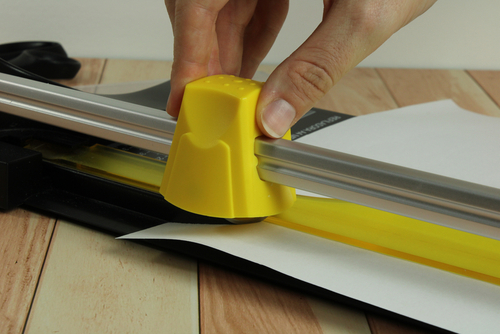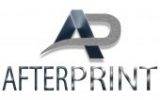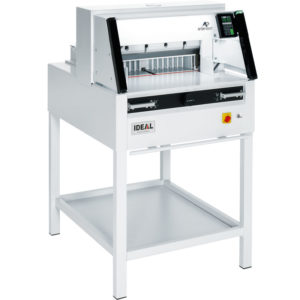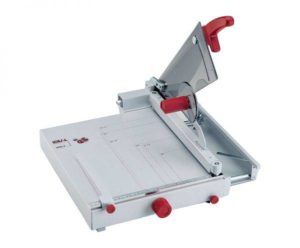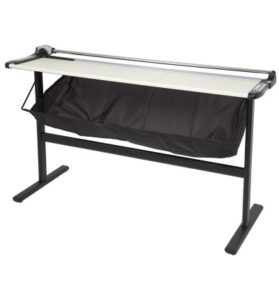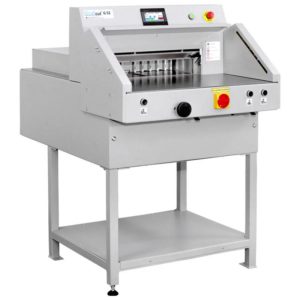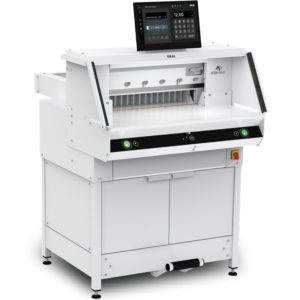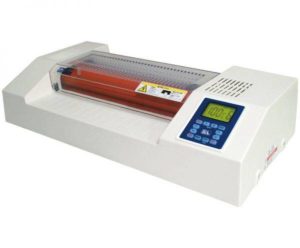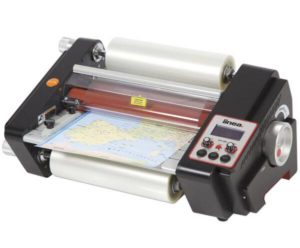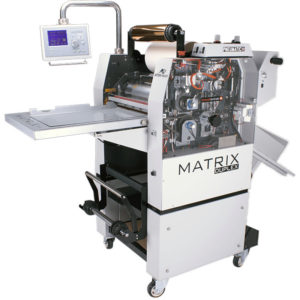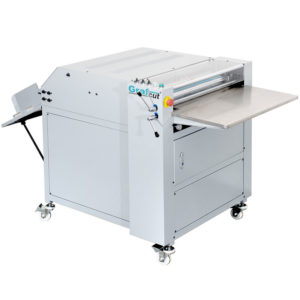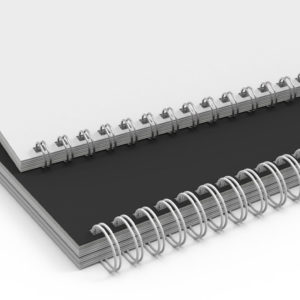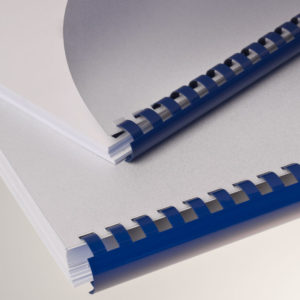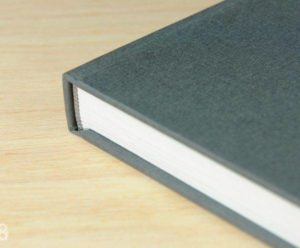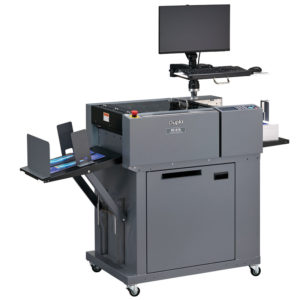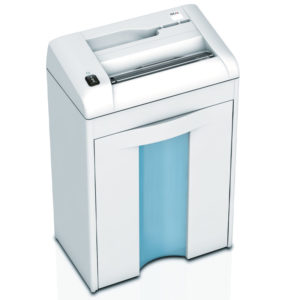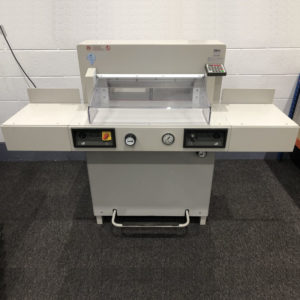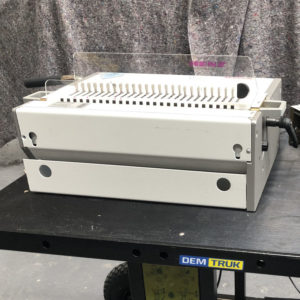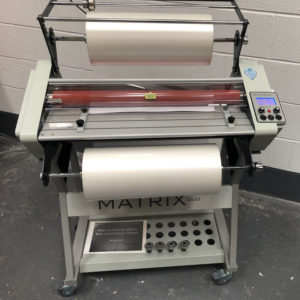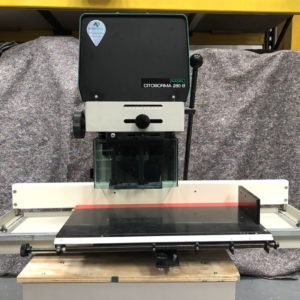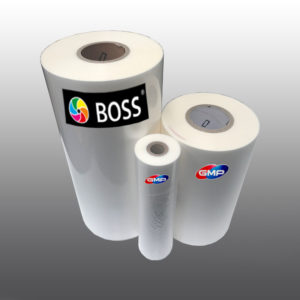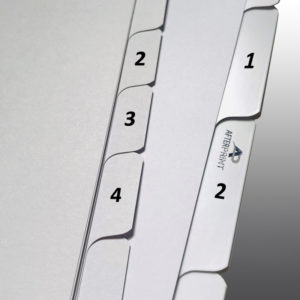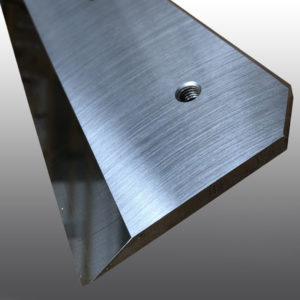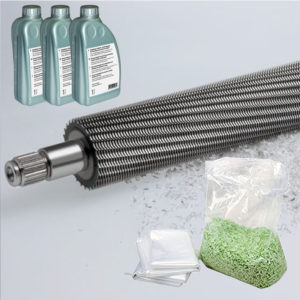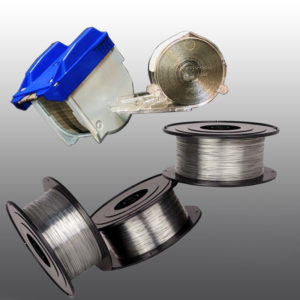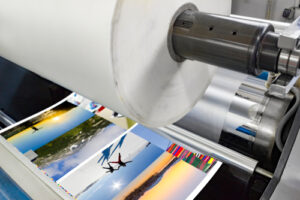15 February 2024
Safety First: How to Properly Use and Maintain Your Paper Guillotine
In any office or print shop, a paper guillotine is an indispensable tool for swiftly and accurately cutting large stacks of paper. However, its utility comes with significant responsibility, particularly concerning safety and maintenance. AfterPrint is dedicated to not only supplying top-tier print finishing equipment but also ensuring that users can operate these tools safely and efficiently. Here’s a comprehensive guide on how to properly use and maintain your paper guillotine, prioritising safety above all.
Using Your Paper Guillotine Safely
- Read the Manual: Before operating the guillotine, thoroughly read the manufacturer’s manual. Understanding the specific features and safety measures of your model is crucial.
- Safety Checks: Perform regular safety checks to ensure all guards and safety features are in place and functional. Never attempt to bypass these mechanisms.
- Proper Training: Ensure that anyone who uses the paper guillotine has received proper training. Understanding how to operate the machine safely is fundamental to preventing accidents.
- Use Safety Guards: Always use the guillotine’s safety guards. These are designed to keep your fingers away from the blade during operation.
- Secure the Paper: When positioning paper for cutting, make sure it is securely held by the clamp to prevent movement that could lead to an uneven cut or potential hazard.
- Focus and Attention: Always give the cutting task your full attention. Distractions can lead to accidents.
- Wear Appropriate Clothing: Avoid wearing loose clothing or jewellery that could get caught in the machine.
- Keep the Area Clear: Ensure the space around the guillotine is clear of unnecessary objects or clutter to prevent any accidents or obstructions.
Maintaining Your Paper Guillotine
- Regular Cleaning: Keep the machine clean from dust and paper debris, which can accumulate and affect its performance. Use a soft brush or cloth to clean the blade and table.
- Lubrication: Regularly lubricate moving parts as recommended by the manufacturer to ensure smooth operation.
- Blade Sharpening and Replacement: Keep the blade sharp to ensure clean cuts and reduce the force needed to cut through paper, which in turn minimises safety risks. Replace or professionally sharpen the blade according to the manufacturer’s guidelines.
- Inspect for Wear and Damage: Regularly inspect your guillotine for any signs of wear or damage, especially to the blade and safety guards. Promptly address any issues to maintain optimal safety and performance.
- Schedule Professional Maintenance: In addition to your own maintenance routine, schedule professional inspections and maintenance as recommended to ensure your guillotine remains in top condition.
- Keep a Maintenance Log: Maintain a log of all maintenance activities, including cleaning, lubrication, blade sharpening, and professional servicing. This will help ensure a regular maintenance schedule is followed.
Conclusion
A paper guillotine is a powerful tool that, when used and maintained properly, can significantly enhance productivity and efficiency in preparing documents. By prioritising safety and adhering to a strict maintenance schedule, you can ensure that your guillotine serves your office or print shop safely and effectively for years to come. AfterPrint is committed to providing not only the equipment you need but also the guidance to use and maintain it safely, ensuring your operations run smoothly and securely.
